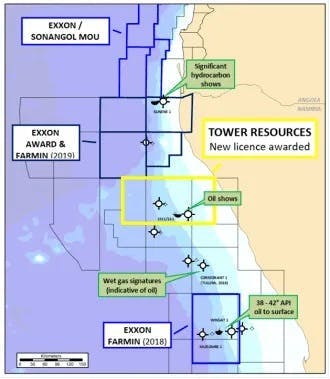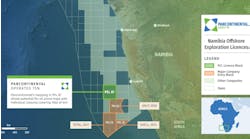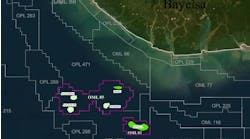Namibia’s Ministry of Mines and Energy has agreed to extend the initial exploration period of Tower Resources’ offshore PEL96 through Oct. 31.
It has also invited the company to apply to enter the license’s First Renewal Period covering a further two to three years, and the Ministry has decided that Tower can defer its commitment to acquire 1,000 sq km of new 3D seismic data to the First Renewal Period.
The remaining work under the initial term commitments, comprising oil seep satellite analysis, play fairway analysis, development of an updated prospect and lead inventory, and high-grading of acreage, is largely completed.
However, Tower continues to assess large stratigraphic and structural leads and prospects, and it plans to reprocess previously acquired 2D data over large areas of the license.
This will take place during the remainder of the current initial phase and into the First Renewal Period to support selection of an area for further 3D data acquisition.
Evaluation has taken more time than anticipated due to the emergence of various substantial stratigraphic traps, in addition to the large anticlines and other structural traps that the company had already identified.
Its basin modeling, completed last year, had established the presence of source rocks deep within the PEL96 portion of the Dolphin Graben that appeared to be mature for generating more than 100 to 150 Bbbl of oil. The team also imaged well-defined migration paths for this oil.
In the time since, the company has reviewed and interpreted more than 20,000-line km of 2D seismic data across PEL96. This work has led to the identification of the stratigraphic traps in five main areas of the license, all adjacent to the deeper source rocks of the Dolphin Graben and the migration paths uncovered previously.
Due to the variability of quality or coverage of data over some of the leads, the PEL partners plan to reprocess the existing seismic in these areas to extract as much information as possible from the original data files and pursue improved seismic data quality.




